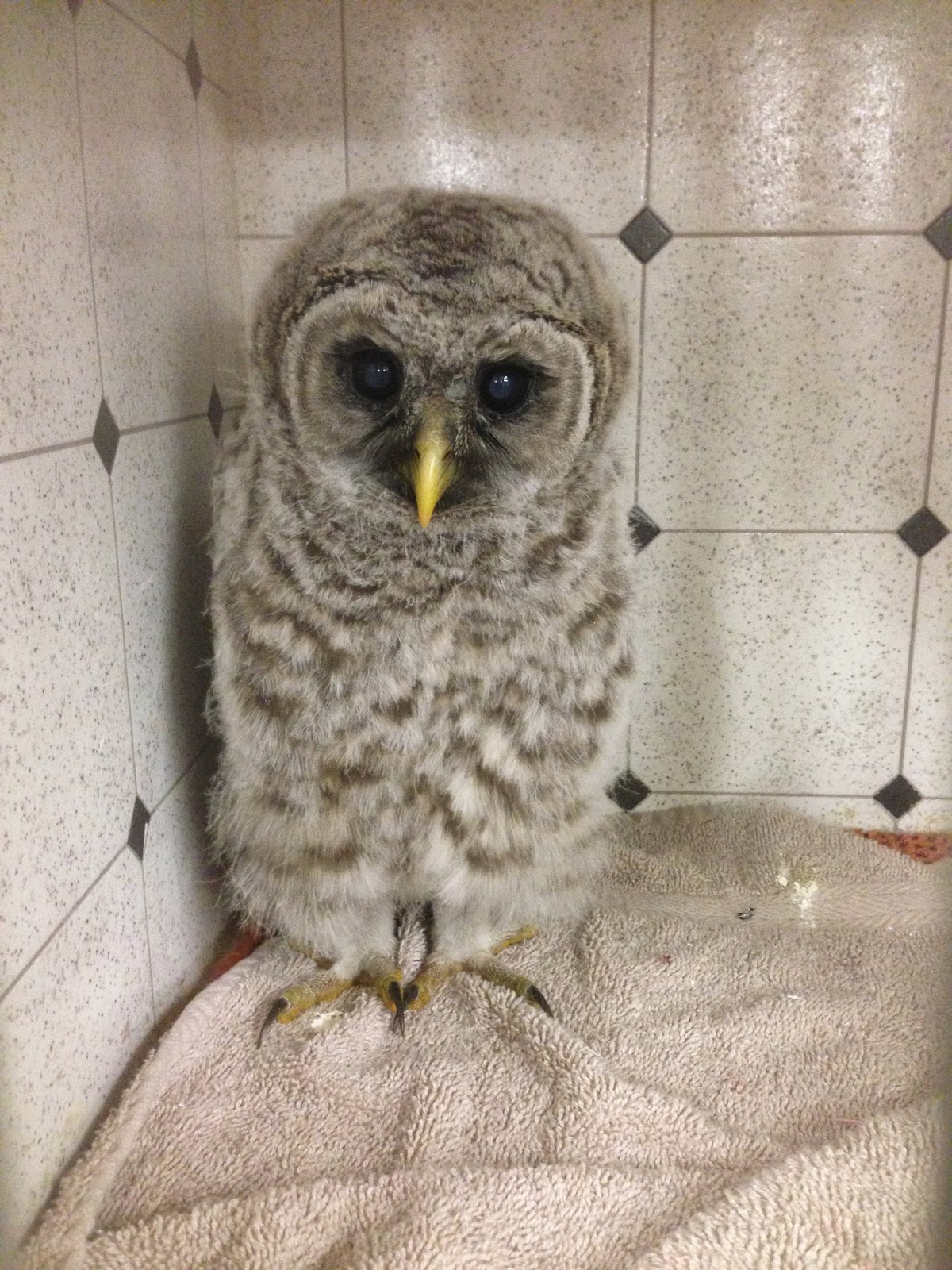With the passing of a
long winter, spring has finally sprung.
We are now entering the season that most of us at WBS have nicknamed
“The Baby Season.”
With birds of prey, which
species will arrive when at WBS’s Rehabilitation department is pretty
predictable. First will be the
native owl species, then around mid-May the native hawk, falcon, and eagle
species will start showing up.
There are some simple yet very important steps to take if a baby bird of
prey were to show up in your neck of the woods.
Baby Barred Owl (photo: Adam Triska)
The World Bird Sanctuary
is home to the Catherine G. Favre Wildlife Hospital, where we specialize in the
rehabilitation of sick and injured birds of prey. Around this time of year we experience a particularly high
influx of birds to treat in the hospital.
Because of limited funds and manpower, we cannot go out on individual
calls to bring back birds ourselves.
We must rely almost exclusively on the individuals who discover these
birds. We examine the birds to
look for any ailments or injuries here in the Wildlife Hospital. After the initial examination, we go on
to determine what should be done in the best interest of each individual bird.
While instinct may lead
you to want to pick up a cute, fluffy, lonely baby birdie, it may not be a
smart idea. The parents are
usually in the area, and unlike smaller songbirds, bird of prey parents may be
aggressive and quite dangerous. I
caution you to only intervene if the baby bird appears sick or injured.
Unlike the parents of these baby Bluebirds, bird of prey parents may attack would-be rescuers (photo: Adam Triska)
The most beneficial action
to take if you were to stumble across this situation would be to call us here
at the World Bird Sanctuary, while keeping your eyes on the bird. One of our representatives at the
Wildlife Hospital can walk you through what to do next.
If that isn’t possible,
try to answer these three very important questions:
1. Are the parents
nearby?
2. Is it safe and
necessary to remove the baby from its natural habitat?
3. Is the bird able to
fly?
If the parents are in the
area actively feeding and guarding the baby, it would be best not to disturb
the family and to let nature take its course. For the first several days after leaving the nest, baby
birds aren’t usually very skilled at flying. In this case we would instruct you to return the baby to a
safe place near or at the location where it was found. If the bird can stand well, put it on a
low branch, top of a fence or the top of a shed, so it isn’t as vulnerable to
ground predators. Be careful if
you have to leave the ground to place the baby.
If it is indeed necessary
to rescue the baby bird, there are again precautions to consider. The equipment needed to capture a baby
bird includes:
° A good pair of leather gloves (welding
gloves or garden gloves)
° A towel, sheet or jacket of some sort
° A box with a closeable top for
transportation that is large enough to hold the bird
Once you have contacted
the World Bird Sanctuary and explained the situation, if the suggestion is to
bring the bird to the Wildlife Hospital you need to gather your supplies and do
the following:
° Put the gloves on and slowly approach
the bird with the sheet/towel/blanket/jacket spread between your hands.
° Then simply drape the sheet over the
baby and grab for the feet.
° Once you have a good hold of the feet
you can place the bird and the sheet into the box. Make sure that you always
have someone else with you when handling a wild animal.
° Once the box is sealed, as soon as
possible make arrangements to get the bird to
WBS or another Wildlife Hospital that accepts birds of prey.
In closing, I’d like to
remind everyone that it is unlawful and morally incorrect to keep a baby bird
as a pet. Birds of prey are protected under federal and state law, and require
specific diets so they grow correctly.
Submitted by Adam Triska, World Bird Sanctuary ETC
Supervisor






No comments:
Post a Comment